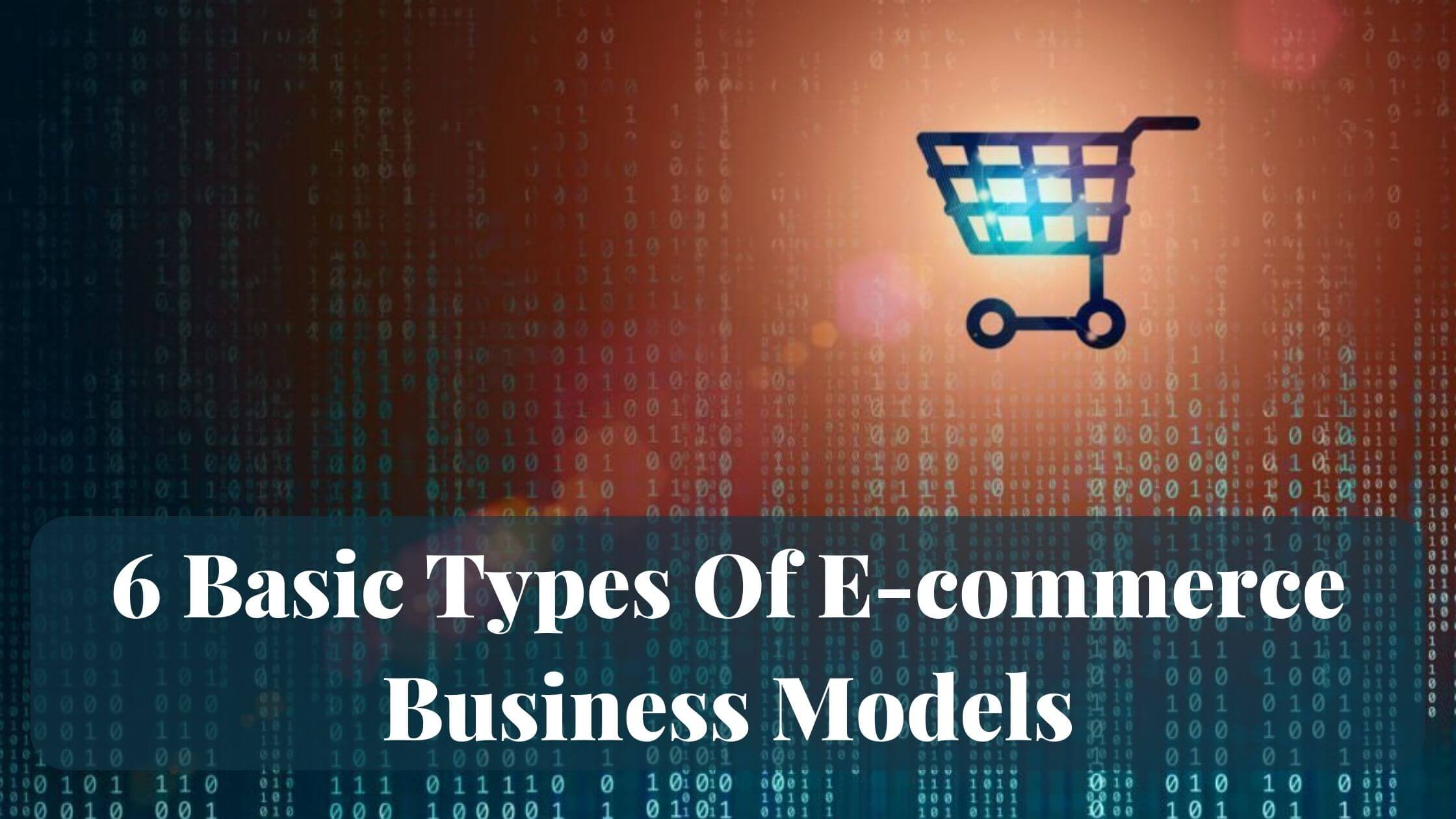6 Basic Types Of E-commerce Business Models That Work!
In recent years the electronic business has reached new heights and the growth of these areas has been great.
The main reason for the growth of e-commerce is that there have been added many technological advances, so before you start an e-commerce business it is important to understand the fundamentals involved in setting up an e-commerce store.
What Are The Major Business Models For eCommerce?
Contents
Many of newcomers do not understand and do not research the business models involved in e-commerce.
So here in this article, we will help you to find types of e-commerce businesses, revenue, and product models that will surely help you decide which business is for you.

What Is E-commerce?
Commerce is an important part of business, and if we do any type of trading or commerce electronically then it is called e-commerce.
In simple words, we can say that e-commerce is the process of buying or selling goods, products, or services over an electronic medium.
Also in other words e-commerce is a medium of trading goods and services between buyers and sellers through an electronic medium.
It is also referred to as a paperless exchange of business information using EDI, Email, Electronic fund transfer, etc. Amazon, eBay, Flipkart, etc are the world’s leading e-commerce websites.
Types Of eCommerce Business Models
There are 6 types of e-commerce businesses. Read further to know about all these types.
1. Business to Business (B2B)
Business-to-business e-commerce can be simply defined as commerce between companies. And they are not engaged in sales to the consumer public, it’s a trade sale or services like CRM.
This model mainly describes the transactions between a retailer or a wholesaler, or a wholesaler and manufacturer.
2. Business to Consumer (B2C)
In this B2C model, the company sells its products, goods, or services directly to the consumer online. It is the most common type of business and one of the thickest e-commerce markets.
In this type of business model, the customers can view products on the website that they want to buy and can order them. Amazon, Flipkart, ZoomShot Pro, etc are the best example of this type of business.
3. Consumer to Consumer (C2C)
With the help of the internet or web technologies here a consumer sells products, goods, or services to other consumers. It is also known as a citizen to the citizen and it requires immense planning and marketing understanding.
This model mainly helps us to sell our assets or properties like a car, houses, bikes, electronics, etc online to other consumers. OLX, Quickr, etc are the best example of this type of business.
4. Consumer to Business (C2B)
This business model is a type of commerce where a consumer or end-user provides a product or service to an organization.
The one thing that differentiates from other business models is that the consumers create value for the products. C2B examples include Google Adsense, Commission Junction, and Amazon.
5. Business to Administration (B2A)
It is referred to as the business to government (B2G) commerce and in this model, the businesses and government agencies (administration) use central websites to exchange information and do business with each other.
With the help of this model, businesses can bid on government opportunities including tenders auctions, and application submissions.
6. Consumer to Administration (C2A)
Consumer to Administration is also referred to as Consumer to Government which helps consumers to request information or post various feedback regarding public sectors directly to the government authorities or administration.
This provides an easy and instant solution or way to establish communication between consumers and the government.
C2A business model includes when you pay electricity bills through the government website, payment of health insurance, make payment of taxes, etc.
Reasons For E-commerce Failures And Mistakes
There are a few reasons for the failure of e-commerce, so let’s see what mistakes you need to avoid.
- High shipping costs
- Lack of content marketing
- Bad user experience
- Lack of E-mail marketing
- Poor data analysis
- Bad photos
- Duplicate content
- Lack of Google Analytics and Google Optimize
Now you can easily decide which business will profit you the most.
Hope you liked this article and find it useful. Are there any questions or if you have any other suggestions and inquiries you can get in touch with me through the comments section.
